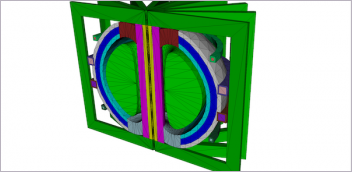Multiphysics Engineering Simulation in the Cloud
This whitepaper highlights the benefits of cloud-native engineering simulation using SimScale and describes how fast and accurate analysis types readily available to engineering teams allow them to simulate early in the design stage.

November 15, 2021
Simulate early, simulate more, simulate now with SimScale
A multiphysics approach to design is of the essence to fully capture the real-world interactions between the physical phenomena at play inside today’s complex products.
This means that to develop the best products need to adopt simulation tools capable of handling structural, thermal, and fluid flow behavior with high-fidelity and in a timely manner.
Access to CAE simulation tools in the cloud is therefore critical and can offer a competitive advantage, as it enables engineering teams to quickly assess product performance and accelerate design iterations by leveraging its virtually limitless computational power and collaborative nature.
Engineers and designers have traditionally been constrained by legacy desktop CAE tools. Neither the computational power available locally, or its associated cost, scale up or down on-demand. Nor can it offer continuously evolving full-spectrum simulation and analysis capabilities that take advantage of the latest advances in cloud technology.
When CAE simulation tools are born in the cloud, they are inherently scalable, fast, collaborative, integrated, proactive, easy to use, cost-effective, and fairly priced. Reducing the need for physical prototyping, introducing digital prototyping as a standard engineering tool, and accelerating digital transformation initiatives is possible with the right tools; cloud-native engineering simulation is one of them.
Fill out the information below to download the resource.
Latest News









